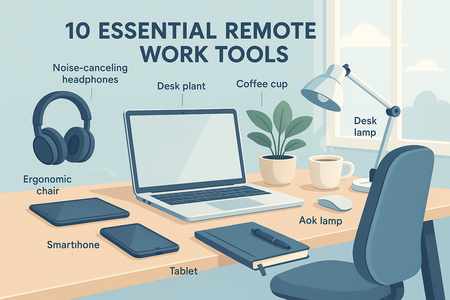For founders and marketers running ecommerce brands, manual tasks often feel like progress. But repetition, not refinement, is what drains the bottom line. From cart recovery to inventory syncs, some of the most impactful workflows are still being handled manually by brands losing valuable time and revenue each week.
Understanding what to automate, and when, has become a decisive factor in ecommerce growth. With AI, CRM integrations, and no-code tools evolving rapidly, automating essential ecommerce workflows is no longer a tech luxury—it is strategic hygiene.
Why Ecommerce Workflow Automation Matters
Automation is not just about doing things faster. It’s about building infrastructure that compounds returns while protecting consistency. According to a recent McKinsey report, companies that automate key marketing and operational workflows reduce customer acquisition costs by up to 30 percent, while boosting lead conversion rates significantly.
The compounding benefits show up across critical areas: lower customer churn, fewer stockouts, more accurate segmentation, and higher average order values. Yet most small to mid-size ecommerce brands are still slow to adopt automations that larger competitors deploy by default.
1. Abandoned Cart Sequences That Convert While You Sleep
The average cart abandonment rate across ecommerce is over 69 percent, according to Baymard Institute research. Automated cart recovery emails or SMS flows—triggered when a user exits without purchasing—consistently rank among the top ROI-generating automations.
Successful brands use branching logic and smart segmentation to customize the follow-up cadence based on total cart value, item urgency, or return behavior. When paired with dynamic product images and discount timers, these sequences recover significant revenue with no manual follow-up.
2. Smart Post-Purchase Flows for Retention and Reviews
The transaction should not be the end of communication. Automated post-purchase workflows allow brands to:
-
Thank customers personally
-
Recommend relevant accessories
-
Request product reviews after delivery
-
Offer loyalty points or referral codes
Brands that invest in well-timed post-purchase flows retain more customers and collect significantly more reviews, which in turn influences future conversion rates. Smart segmentation by SKU or product category ensures messaging stays highly relevant.
3. Inventory and Order Syncing Across Channels
If your ecommerce brand operates on multiple platforms (e.g., Shopify, Amazon, Faire), syncing inventory and order data in real time is essential. Inventory discrepancies lead to canceled orders, overselling, and poor customer experience.
Automation tools like Make, Alloy, or native platform integrations help push order details, product changes, and fulfillment updates across systems. When inventory workflows are automated, it not only reduces human error, but also frees up teams to focus on growth-driving tasks like content or CX.
4. Dynamic Product Recommendations Using AI
AI-powered recommendation engines can now plug directly into Shopify, WooCommerce, or headless builds. They analyze user behavior, purchase history, and even session patterns to present tailored upsells and cross-sells.
According to a case study by Shopify Plus, dynamic recommendations increased average order value by up to 20 percent on high-volume stores. Automation ensures that recommendation logic updates continuously based on stock levels and user trends.
5. Automated Email and SMS Campaign Triggers
Instead of blasting one-size-fits-all campaigns, ecommerce brands using trigger-based messaging see higher engagement and ROI. Automation platforms allow campaigns to fire based on:
-
Time since last purchase
-
Browsing behavior on specific product pages
-
Seasonal buying patterns
Combining behavioral segmentation with automated content updates lets brands stay timely and relevant, especially when paired with a conversion-focused email design.
6. Customer Support Workflows That Reduce Tickets
Using automation in support doesn't mean replacing humans. It means using self-service flows, AI chatbots, and templated responses to handle routine inquiries like order tracking or returns.
As noted on Shopify’s blog, integrating AI assistants into ecommerce support reduces response times dramatically, while freeing human agents to handle higher-touch issues. Automated escalation flows ensure that more complex requests still reach the right team members efficiently.
7. Affiliate and Influencer Payout Tracking
Managing partnerships manually can strain growing brands. Automated workflows that generate custom tracking links, assign performance tiers, and issue payouts based on traffic or sales can streamline this otherwise fragmented channel.
These systems also allow brands to nurture influencer relationships with automated performance updates, bonus unlocks, or campaign briefs—without needing to chase spreadsheets.
Workflow Automation Is Brand Infrastructure
Each of these workflows connects back to a larger principle: operational clarity creates marketing creativity. Brands that eliminate repetitive tasks make space for better strategy, deeper storytelling, and faster iteration.
Platforms like Ukiyo Productions offer automation consulting specifically tailored to ecommerce brands who need elegant backend systems to match their front-end identity.
The most compelling brands of 2025 will not be those who "do everything manually for the love of the craft" but those who structure their business to scale what works with precision. Workflow automation, when done right, becomes an invisible engine of consistency.
According to HubSpot, 76 percent of companies that use marketing automation see a return on investment within a year. When that automation is deeply aligned with customer behavior and brand strategy, it becomes more than an efficiency play—it becomes a growth lever.
It is often not the big campaigns that stall ecommerce growth, but the absence of small systems working quietly behind the scenes. The question is not when to start automating. The real question is why you waited.






0 comments